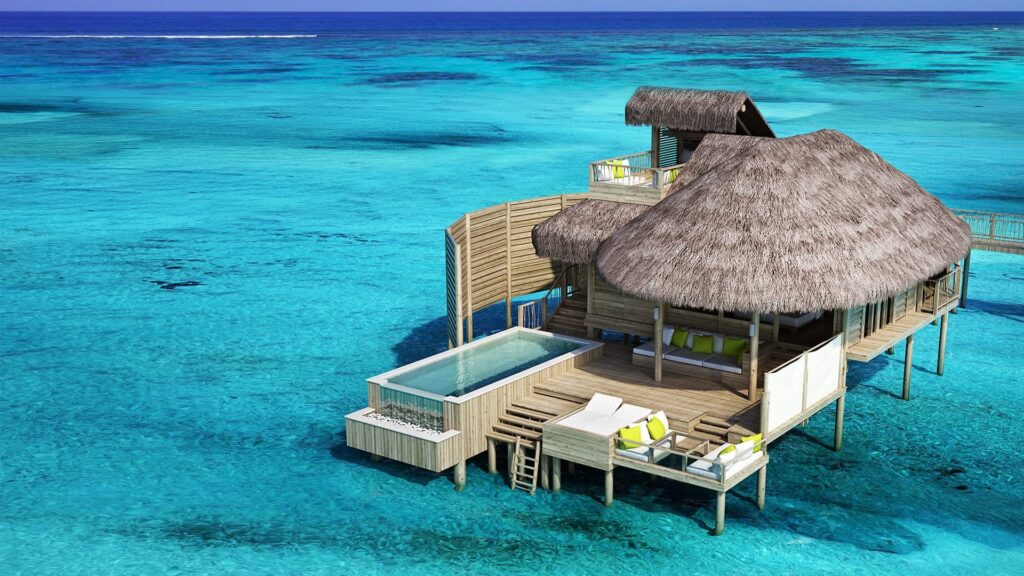Geography of the Maldives: A Unique Island Nation Explained

When you think of tropical paradise, chances are the Maldives comes to mind — turquoise waters, white-sand beaches, and floating bungalows. But beyond its postcard-perfect beauty lies a fascinating geographical story. Let’s explore the unique geography of the Maldives, one of the most extraordinary island nations on Earth.
🗺️ Where is the Maldives Located?
The Maldives is a South Asian island country located in the Indian Ocean, southwest of Sri Lanka and India. It sits near the equator, which means it enjoys a warm tropical climate year-round.
- 📍 Coordinates: Approximately 3.2028° N, 73.2207° E
- 🌊 Surrounding body: Laccadive Sea, part of the larger Indian Ocean
🏝️ An Archipelago of 1,190+ Islands
One of the most distinctive features of the Maldives is its archipelagic composition. The country consists of around 1,190 coral islands, grouped in 26 natural atolls (plus one isolated island). These atolls are spread over roughly 90,000 square kilometers of ocean, making it one of the most dispersed countries in the world.
Only about 200 islands are inhabited, while others are used for tourism, agriculture, or remain uninhabited.
✅ SEO Keyword Tip: “Maldives islands”, “atolls in Maldives”, “Maldives geography map”
🧱 Coral Reefs: The Foundation of the Nation
Unlike many countries that sit on solid land masses, the Maldives is made entirely of coral reefs. These islands formed atop ancient volcanic mountains submerged in the ocean.
- 🌋 No mountains or rivers
- ⛰️ Average elevation: just 1.5 meters (4 ft 11 in) above sea level
- ⚠️ It is the lowest-lying country in the world

This makes the Maldives extremely vulnerable to sea level rise due to climate change — a critical concern for its future.
📊 Quick Facts: Geography of the Maldives
| Feature | Details |
|---|---|
| Total land area | ~298 sq km |
| Number of islands | 1,190+ |
| Number of atolls | 26 |
| Inhabited islands | ~200 |
| Capital | Malé |
| Highest natural point | ~2.4 meters (on Villingili Island) |
| Climate | Tropical monsoon |
| Time zone | GMT+5 |
🏙️ Malé: The Crowded Capital
The capital, Malé, is located in the Kaafu Atoll and is one of the most densely populated cities in the world. Despite its small size (about 9 square kilometers), it’s the political, economic, and cultural hub of the country.
🛫 Malé International Airport (Velana International Airport) is the main entry point for travelers visiting the Maldives.
🐠 Marine Biodiversity & Ecology
The Maldives boasts one of the richest marine ecosystems on the planet. Its coral reefs support:
- 🐠 2,000+ species of fish
- 🐢 Endangered sea turtles
- 🦈 Whale sharks & manta rays
- 🌿 Colorful coral gardens
The unique geography and isolation of the islands make them a biodiversity hotspot, attracting divers, snorkelers, and researchers alike.
⚠️ Challenges Facing the Maldives
Due to its low elevation and reliance on coastal ecosystems, the Maldives faces several geographical challenges:
- 🌊 Rising sea levels threaten to submerge parts of the nation.
- 🌀 Climate change leads to stronger storms and coral bleaching.
- 🏖️ Erosion of beaches and shorelines
- 🌱 Limited arable land and fresh water sources
The government is actively working on sustainability initiatives, including building sea walls and exploring artificial island developments.
✨ Final Thoughts: A Nation Like No Other
The geography of the Maldives is nothing short of extraordinary. It’s a country where nature and culture are deeply intertwined, and every island has a story to tell. From its coral-built islands and atolls to its breathtaking marine life, the Maldives stands as a geographical marvel and a global treasure.
🔍 Frequently Asked Questions (FAQs)
Q1: Is the Maldives a volcanic island chain?
A: No, while the islands are built atop submerged volcanic ridges, the Maldives itself is made primarily of coral formations.
Q2: How many islands are there in the Maldives?
A: There are over 1,190 islands, grouped into 26 natural atolls.
Q3: Why is the Maldives at risk of sinking?
A: Its average elevation is just 1.5 meters above sea level, making it highly vulnerable to sea level rise caused by climate change.
